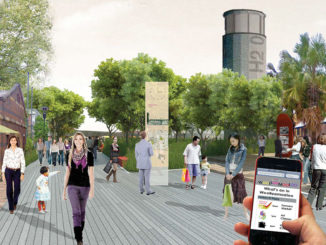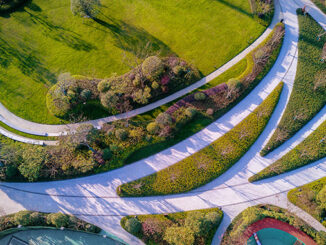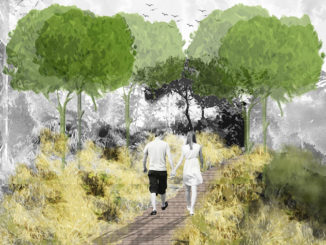Winner of the Merit Award in the Student – Analysis and Planning category of the 2020 WLA Awards
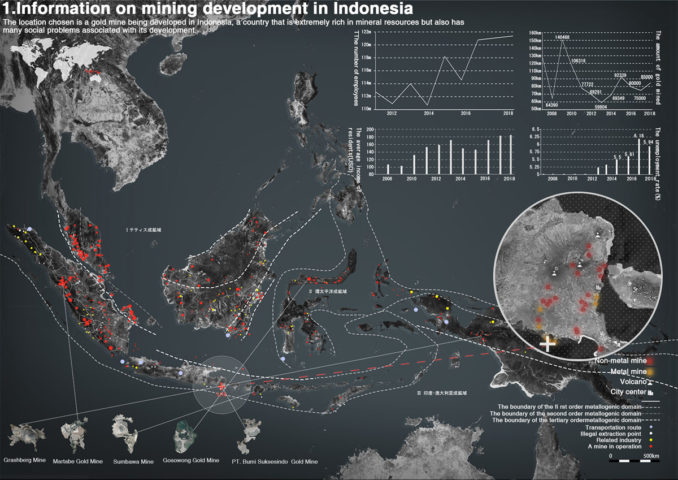
Nowadays, owning the Grasberg mine, the world’s largest copper and gold mine, Indonesia has surged up among the world’s gold producing countries with an annual increase of 23% in 2018, overtaking Peru as the world’s sixth largest gold producer. Gold mining is on the rise, but as resources dry up, big mining companies are pulling back, leaving the Indonesian government with a pollution problem worth billions of dollars.
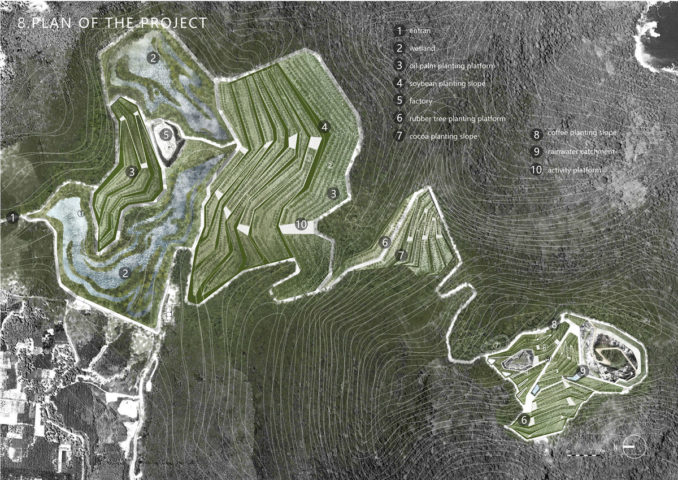
With the departure of large companies, the remaining pits will be used for illegal mining, which may lead to mining accidents and further pollution. The unemployment of a large number of migrant miners and villagers will also lead to social instability in some areas which will plummet the government’s financial revenue.
This project aims to introduce a pre-emptive approach. Through sorting out and reconciling the interests of the consortium, the government, the miners and the villagers to raise a phased remediation of the mine which is resilient and adaptable. With the collaboration of international organizations, government authorities and local community, using the landscape strategies to complete the transformation from mine pit to plant orchard, which aims to provide a paradigm shift for many mines in Indonesia.
Contemporary Issues
Pollution problems
There would be air pollution caused by blasting and transportation during the mining process and rock movement would cause the platform overburden. Using cyanidation to refine the ores into the gold would consume a mass of water and cause mercury& cyanide pollution.
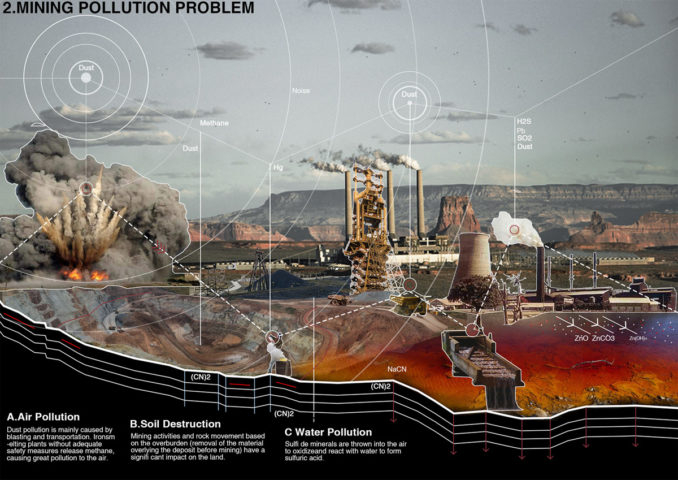
Social problems
The government of Indonesia has decided to raises taxes on unprocessed ore every year, the relationship between the local government and those foreign companies is sensitive. This uncertainty also led to significant capital loss. Eventually, with the withdrawal of international mineral enterprises, a large number of miners are facing unemployment.
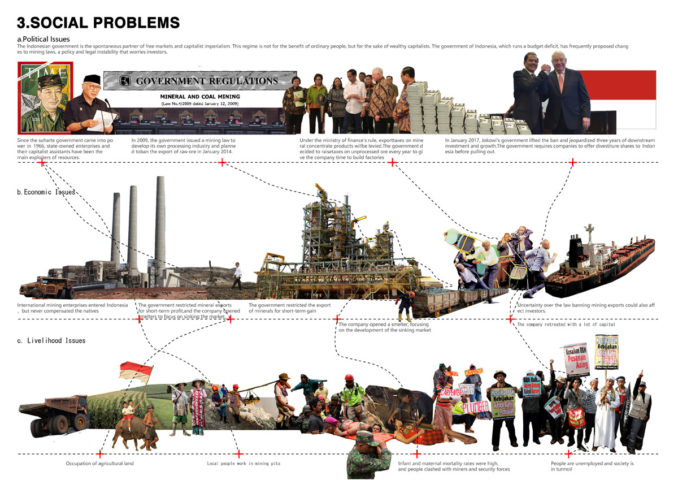
Strategies to rebirth mining area
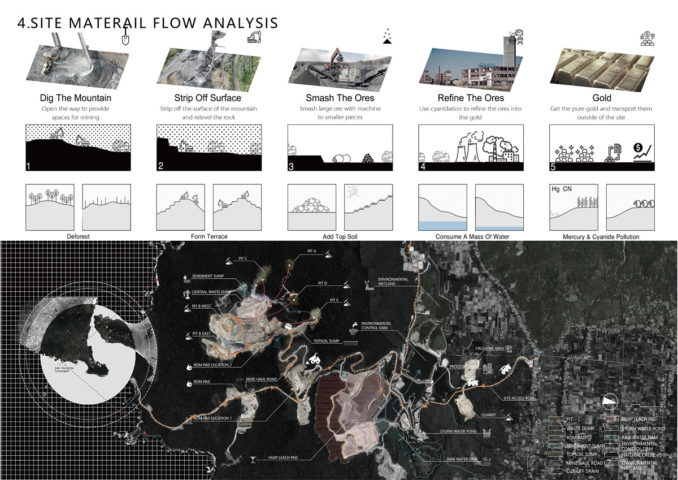
The overall reconstruction strategy of the site can be divided into three stages: pollution control, site greening and economic revitalization. Most of the materials used in the transformation are from the original site.
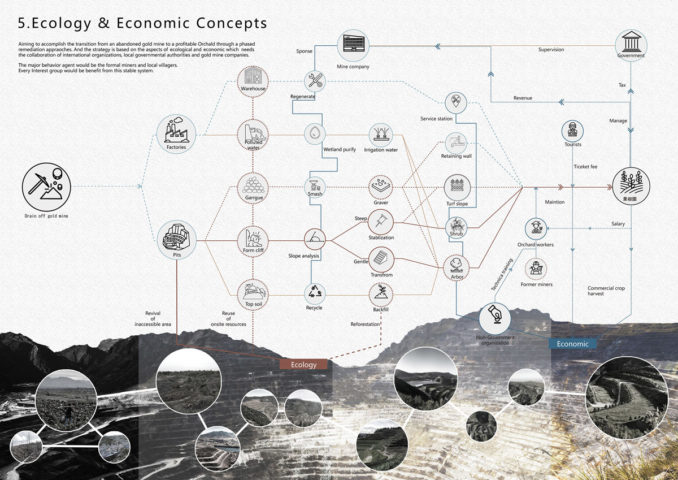
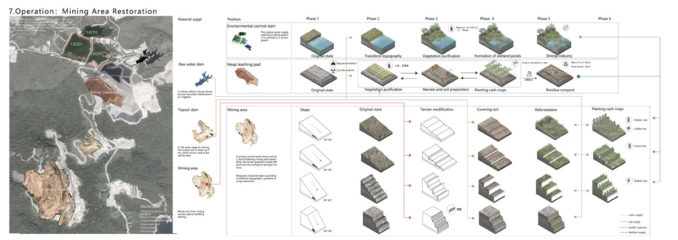
Aiming to accomplish the transition from an abandoned gold mine to a profitable orchard through a phased remediation approaches. And the strategy is based on the aspects of ecological and economic which needs the collaboration of international organizations, local governmental authorities and gold mine companies. The major behavior agent would be the formal miners and local villagers. Every Interest group would be benefit from this stable system.
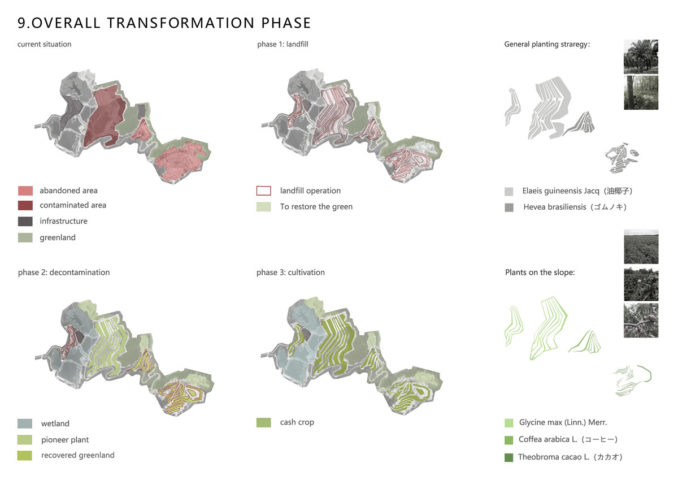
Collaboration diagram
There would be four key organizations to function this system: Non-Governmental Organizations、Government of Indonesia、Government of Banyuwangi、Government of East Java.
Banyuwangi Government (BDA)
Response for state policies and programs aimed at achieving making gold and copper mines rebirth and agricultural growth, a part of the Ministry of Agriculture.
Ministry of Environment and Forest (MEF)
MEF would serve as a middleman between the mining companies and Indonesia government. It would offer legal basis to the local communities to protect their own interests.
Archaeology Survey of Indonesia (ASI)
The Archaeology Survey of India(ASI), Under the MInistry of Culture, is the premier organization for the archaeological researches and protection of the cultural heritage of the nation.
Indonesia Mine Restoration Plan
Location: Indonesia PT BUMI SUKSESINDO MINESITE
Team:
Yuxuan Cai – Wuhan Polytechnic University
Bowen Dong, Shaanxi University of Science & Technology
Weiyang Tang – Tianjin University Urban and Rural planning
Yixin Jia – Zhejiang A&F University;

